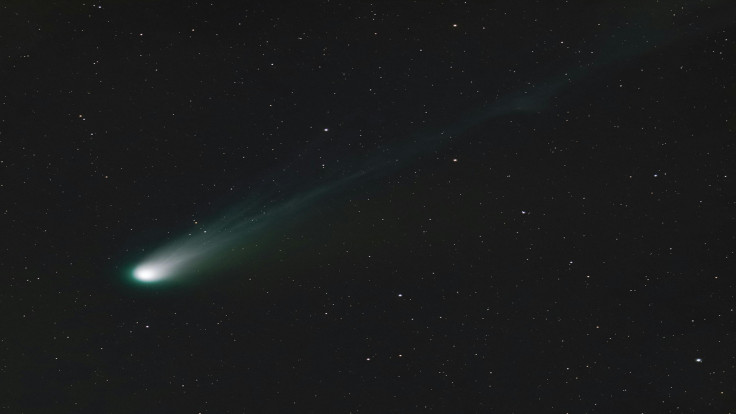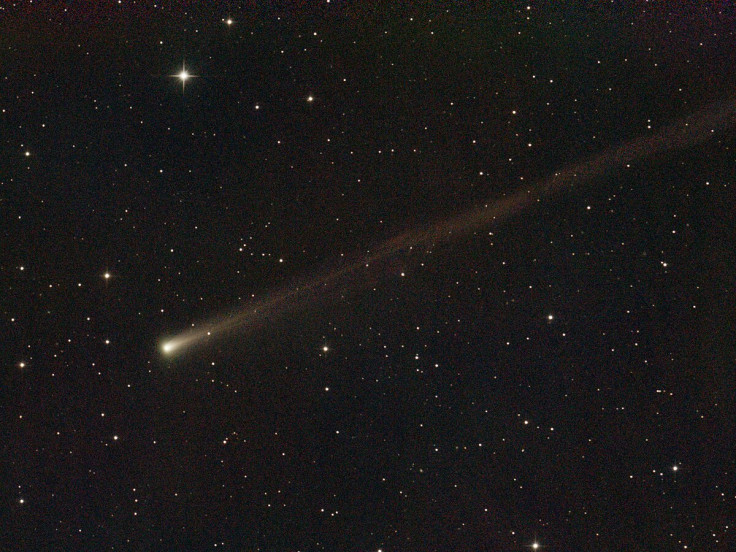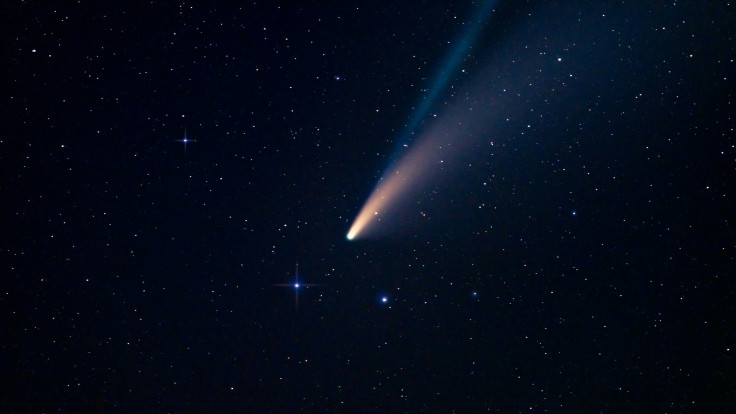NASA Data Confirms 3I/ATLAS Speed Boost is Not From Gravity, Experts Claim
Interstellar Comet 3I/ATLAS is accelerating mysteriously. Is it extreme outgassing or an 'extraterrestrial rocket engine'? Read the latest on this high-speed cosmic puzzle.

What if a visitor from deep space suddenly decided to floor the accelerator? That's the bizarre cosmic drama currently unfolding in our solar system, where the Interstellar Comet 3I/ATLAS is defying the expected pull of gravity.
Having already set a record as the fastest space rock ever detected entering our stellar neighbourhood, this enigmatic object has now been caught in the act of inexplicably boosting its speed as it streaks away from the Sun and towards Earth.
New observational data suggests this celestial interloper may have shed a considerable amount of mass after its solar encounter, prompting a lively scientific debate over whether this acceleration is natural—or something else entirely, as reported in the news source.

The Bizarre Speed Boost of Interstellar Comet 3I/ATLAS
The journey of Interstellar Comet 3I/ATLAS began to capture attention on 1 July, when astronomers at the Asteroid Terrestrial-impact Last Alert System (ATLAS) first detected an object zipping through our solar system at phenomenal velocity.
Subsequent observations quickly confirmed its escape trajectory; with an eccentricity greater than 1, it was identified as an interstellar visitor. It is only the third such object we have ever spotted, following 1I/ʻOumuamua and 2I/Borisov.
This newly discovered object, which many scientists believe is a comet, initially set a record as the fastest space rock entering the solar system ever detected by humans, clocking in at more than 130,000 mph.
The comet's nucleus is estimated to have an upper limit diameter of 5.6 kilometres, though it could be as small as 320 metres across.
However, the mystery deepened after it passed its closest point to the Sun, known as perihelion, on 29 October. This perihelion took place at a distance of approximately 210 million kilometres (130 million miles).
Its speed has now soared to approximately 152,000 mph. NASA has confirmed that a small, extra 'kick' moved the mysterious visitor off its predicted path, an action that cannot be accounted for by the Sun's gravity alone.

Unpacking the Mystery: Non-Gravitational Acceleration on Interstellar Comet 3I/ATLAS
While the Sun's gravity is predominantly responsible for the overall speed boost, scientists are struggling to explain what has caused 3I/ATLAS to noticeably shift away from our home star. The latest observations, taken between 31 October and 4 November, reveal that the interstellar comet has likely lost a significant amount of mass during its encounter with the Sun.
Crucially, it has also changed course slightly, undergoing non-gravitational acceleration, or acceleration not accounted for by gravity alone. Observations from the James Webb Space Telescope (JWST) and other observatories have detected the presence of carbon dioxide, carbon monoxide, carbonyl sulfide, and water ice emanating from the comet's surface, which are key markers of its interstellar origins.
Harvard physicist Avi Loeb has been vocal, noting that astronomers are still awaiting evidence that 3I/ATLAS has released anywhere close to enough gas to conclusively prove the object is really a comet.
As comets are heated, they lose mass through outgassing, where the volatile ices on their surface vaporise; the conservation of momentum dictates that the object undergoes a resulting acceleration.
However, the magnitude of the measured acceleration is significant. As astronomer Avi Loeb explained in a blog post, 3I/ATLAS has undergone a 'radial acceleration away from the Sun of $1.1x10^{-6}$ au per day squared', as well as a 'transverse acceleration relative to the Sun's direction of $3.7x10^{-7}$ au per day squared'.
Close Encounter: Mass Loss and the Extraterrestrial Hypothesis for Interstellar Comet 3I/ATLAS
Loeb's calculations suggest that, under the accepted 'natural' cometary scenario, the object must have experienced extreme mass loss. The numerical data is quite telling.
'The reported non-gravitational acceleration amounts to 94 kilometres per day squared at perihelion. These values combine to imply that 3I/ATLAS lost a fraction of its mass equal to: ~13% divided by v in units of 300 metres per second, where a value of v~300 metres per second corresponds to the characteristic thermal speed of molecules at the surface temperature of 3I/ATLAS near perihelion,' Loeb writes. 'This ejection speed would be the maximum expected value for a natural comet, thus implying that 3I/ATLAS must have lost more than 13% of its mass near perihelion in the natural scenario'.
NASA's latest readings found that the mystery push got significantly weaker in the days following 3I/ATLAS's perihelion, but it was still noticeable and unrelated to the star's gravitational pull. With the comet now just six weeks away from reaching its closest point to Earth, this closest approach will occur on 19 December, at a safe distance of about 270 million kilometres (167 million miles). Loeb added that not detecting a cloud of gas coming from the object would be a clear sign that this latest speed boost was powered by an 'extraterrestrial rocket engine.'

Call For Transparency Regarding Interstellar Comet 3I/ATLAS
Amid the growing public intrigue over Interstellar Comet 3I/ATLAS, mounting pressure is being placed on NASA to release high-resolution images of the comet captured during its closest approach to Mars, which occurred on 3 October 2025, at a distance of about 30 million kilometres.
Congresswoman Anna Paulina Luna has formally requested NASA to make available the imagery, highlighting the intense curiosity surrounding this enigmatic visitor from beyond our solar system.
The acceleration of Interstellar Comet 3I/ATLAS presents an astronomical puzzle: is it extreme outgassing from a celestial body, or something truly revolutionary? With this bizarre interstellar visitor continuing its high-speed exit from our solar system and the call for greater transparency mounting, the full truth about the object's nature remains just out of reach.
© Copyright IBTimes 2025. All rights reserved.





















